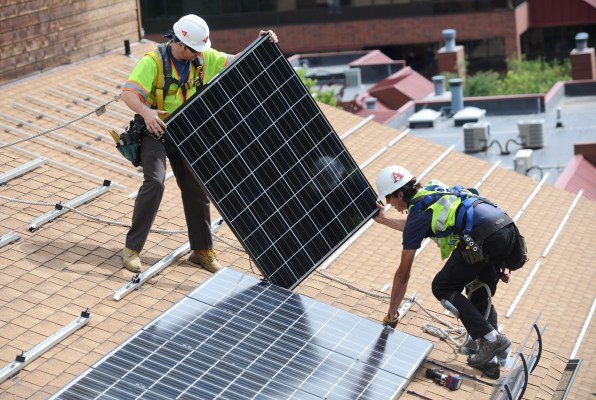For all the focus on carbon pollution produced by shipping and aviation, some of the most challenging to abate will probably be residential buildings. In the U.S., housing units stand an average of 130 years before they’re torn down, according to a recent study.
Homes and apartment buildings built 100 years ago, or even 30 years ago, are woefully underprepared for the energy transition. More often than not, their major mechanical systems rely on fossil fuels, their electrical systems are undersized, and their walls and windows are leaky and poorly insulated.
All that can make for housing that’s less comfortable and less efficient than it needs to be.
Nearly a decade ago, Donnel Baird realized that in many cases, paying for retrofits like this can be cost-prohibitive, requiring a lump sum payment upfront. Even though the benefits might accrue over the years, it was a hurdle many owners couldn’t or didn’t want to cross.
So he founded BlocPower, which has been chipping away at the problem for nearly a decade, developing a roster of projects to prove its retrofit-as-a-service business model that’s focused on low-income communities. This week, it announced that it had raised nearly $25 million in equity and $130 million in debt financing.
The Series B round was led by VoLo Earth Ventures and joined by Microsoft Climate Innovation Fund, Credit Suisse, Builders Vision, New York State Ventures, Unreasonable Collective, Kimbal and Christiana Musk, Gaingels, Van Jones, Kapor Capital, My Climate Journey, Tale Venture Partners and NBA star Russell Westbrook. Debt financing was led by Goldman Sachs.
The funding round comes as the Inflation Reduction Act kicks in. The law offers billions of dollars in tax credits and incentives to entice homeowners and landlords to electrify their properties and wean them off fossil fuels.
But while the top-line sums are significant, the per-unit amounts aren’t as eye-popping. As a result, many owners might not be rushing to upgrade their systems or building envelopes. After all, unless there’s a broken window or a problem with the boiler or water heater, most homeowners and landlords tend to prioritize spending money on things they can see.
Companies like BlocPower, though, could tip the balance by making the retrofit process easier. The company analyzes the ripest opportunities, finances the purchase and installation of new equipment, and then oversees the process and handles ongoing maintenance. Owners can choose whether they want to pay upfront or over time.
Don’t underestimate the effects of reduced friction on the home upgrade process, especially for something like energy and efficiency retrofits. I say that as someone who went headfirst into deep-energy retrofit years ago. The planning and design process was data-intensive, requiring ample information about the home itself and the climate in which it was situated. Getting the construction phase right demanded careful attention to detail and a fair amount of quality assurance. Bearing some of that burden for the owner is certainly worth something.
BlocPower’s new round also comes at a time when local governments are getting serious about reducing the carbon emissions from their city’s building stock. The company’s BlocMaps product, which identifies homes and occupants that might benefit the most, is already being used by a range of cities, including New York City, Ithaca and Chicago.
If that wasn’t enough, BlocPower rounds out its platform with its Civilian Climate Corps program, which pairs people at risk of gun violence with job training and placement opportunities in the green economy. Participants might train as electricians or HVAC technicians, both of which are in short supply today and are likely to be in high demand in the coming decade as the Inflation Reduction Act ramps up demand for heat pumps and home electrification.
BlocPower’s timing is nearly perfect. It weathered the clean tech-climate tech doldrums that spanned the mid-2010s, and it’s emerging with a honed platform and solid plans for expansion. With the Inflation Reduction Act and this new round, the wind is clearly at its back.
